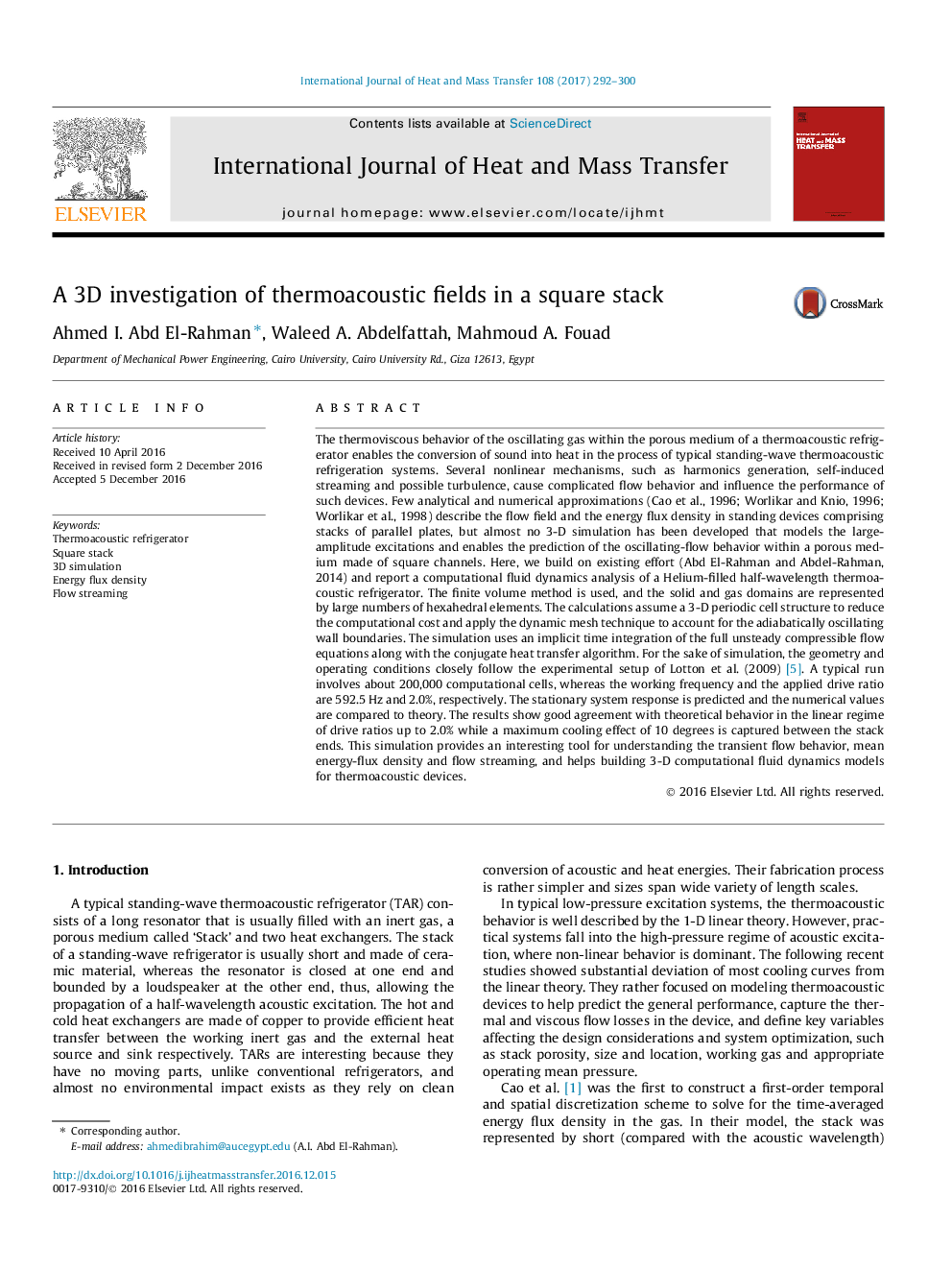| Article ID | Journal | Published Year | Pages | File Type |
|---|---|---|---|---|
| 4994277 | International Journal of Heat and Mass Transfer | 2017 | 9 Pages |
Abstract
The thermoviscous behavior of the oscillating gas within the porous medium of a thermoacoustic refrigerator enables the conversion of sound into heat in the process of typical standing-wave thermoacoustic refrigeration systems. Several nonlinear mechanisms, such as harmonics generation, self-induced streaming and possible turbulence, cause complicated flow behavior and influence the performance of such devices. Few analytical and numerical approximations (Cao et al., 1996; Worlikar and Knio, 1996; Worlikar et al., 1998) describe the flow field and the energy flux density in standing devices comprising stacks of parallel plates, but almost no 3-D simulation has been developed that models the large-amplitude excitations and enables the prediction of the oscillating-flow behavior within a porous medium made of square channels. Here, we build on existing effort (Abd El-Rahman and Abdel-Rahman, 2014) and report a computational fluid dynamics analysis of a Helium-filled half-wavelength thermoacoustic refrigerator. The finite volume method is used, and the solid and gas domains are represented by large numbers of hexahedral elements. The calculations assume a 3-D periodic cell structure to reduce the computational cost and apply the dynamic mesh technique to account for the adiabatically oscillating wall boundaries. The simulation uses an implicit time integration of the full unsteady compressible flow equations along with the conjugate heat transfer algorithm. For the sake of simulation, the geometry and operating conditions closely follow the experimental setup of Lotton et al. (2009) [5]. A typical run involves about 200,000 computational cells, whereas the working frequency and the applied drive ratio are 592.5Â Hz and 2.0%, respectively. The stationary system response is predicted and the numerical values are compared to theory. The results show good agreement with theoretical behavior in the linear regime of drive ratios up to 2.0% while a maximum cooling effect of 10 degrees is captured between the stack ends. This simulation provides an interesting tool for understanding the transient flow behavior, mean energy-flux density and flow streaming, and helps building 3-D computational fluid dynamics models for thermoacoustic devices.
Related Topics
Physical Sciences and Engineering
Chemical Engineering
Fluid Flow and Transfer Processes
Authors
Ahmed I. Abd El-Rahman, Waleed A. Abdelfattah, Mahmoud A. Fouad,
